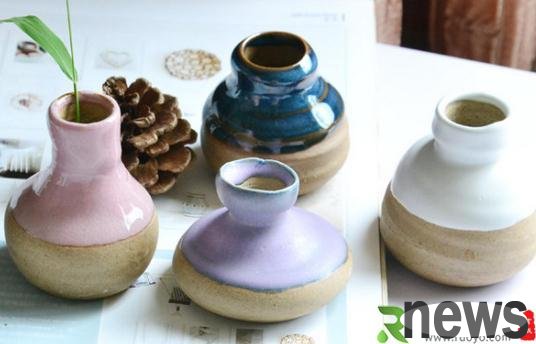The matching method and maintenance skills of window-shaped flower utensils The matching method of window-shaped flower utensils 1. The selection of flower utensils is very important in the design of floral art, and it is about creating an overall a...

The matching method and maintenance skills of window-shaped flower utensils
The matching method of window-shaped flower utensils
1. The selection of flower utensils is very important in the design of floral art, and it is about creating an overall atmosphere. Natural materials must bring a fresh effect. Why not imagine more and just use dead branches as flower tools to reappear a primitive beauty before your eyes.
2. As long as there is a drainage hole at the bottom, the container that can be planted can be used as a flower utensil. From the utensils around your life to the containers that can grow plants, they are the best sources of flower utensils.
3. The leaf wrapping device is used to match the whole. Compared with the generally lower potted flowers, the tall and thin upright appearance looks unique and generous. It can be placed in the entrance hall or used as a large dining table flower to avoid interruption of conversations among diners.
Pair of window-shaped flowerware and products
1. In Asia, large pots and bowls are mostly called flowerware, but in European and American countries, flowerpots or pots, etc., regardless of the size of the container, the containers for planting plants are called flowerware. However, the frame of the pot bowl is not used directly to cultivate plants, which is different from the flower utensil.
2. The cultivation method of using flower utensils is called "flower cultivation"; and the method of beautifying the residence and surrounding environment using flower utensils that plant various flowers, plants, woods or leafy plants, etc. is called "flower gardening" .
3. In addition to artificial materials such as plastic, concrete and stainless steel, flowerware also has natural materials such as pottery bowls, pottery or mahogany. Considering that at the cultivation level such as ventilation or drainage, the display effect can be emphasized based on the harmony between the material and the surrounding areas or the harmony with the plants, the sense of integration or prominence with the surrounding scenery. Cleaning of window-shaped flower utensils
Citrus and glass: First dispose of the flowers inside the potter, and then use a soft brush to remove impurities such as mucus and septic moss.
Metal flowerware: Clean with a wet cloth and a dry cloth, and try to touch less water.
New house plastic flowerware: can be washed or wiped directly with water. Maintenance of window-shaped flowerware:
Canilitary and glass:
1. Find the original packaging box or packaging box, or use suitable cartons, cartons and pads.
2. Use a roll of sealing tape to wrap a few newspapers or pads thickly on the flower utensil.
3. Then put the wrapped flower utensil into the box and stuff the gap into newspaper or pad to prevent shock. This is the best way to preserve it.
Metal flowerware: The focus of maintenance is waterproof, moistureproof and collision-proof. After the collision, use gloss paint or waterproof paint to remedy it.
New house plastic flowerware: Try to avoid direct exposure to the sun to avoid fading and brittle cracking. Plastic flowerware is not resistant to high temperatures. No matter where it is placed, it must be kept away from the high temperature environment to avoid danger.
Natural material:
1. Add a layer of waterproof paint before use to prevent water from accelerating the corrosion of wood and also prevent insect damage.
2. It can be placed in sunlight to expose it to the sun to extend the service life.
3. The higher the frequency of natural material flowerware, the less likely it is to decay; on the contrary, even if it is deliberately dry and stored, if it is not used for a long time, it is easy to cause insect damage or rot.
4. When exposed to the sun, you should pay attention to the exposure time and should not be too long to avoid cracks due to excessive exposure.